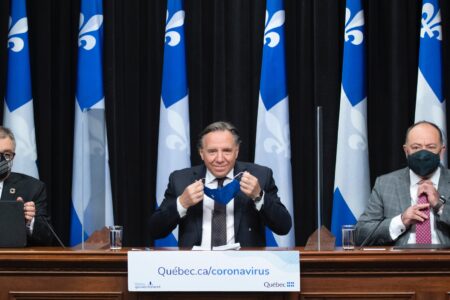
In a rapid response to the devastation that COVID-19 has wreaked on the labour market, the federal government has stepped up, implementing the Canada Emergency Response Benefit (CERB). That program has received well-deserved plaudits, but it leaves a significant gap in assistance: the amount of the CERB that recipients will have left over after paying rent varies a great deal across the country.
Before the pandemic, housing affordability had been a headline problem. Most households can afford to spend about 30 percent of their income on shelter costs. But four years ago the census found that about one out of five renting households in Canada paid more than half their income in rent; in Vancouver and Toronto, one in four renters bore this heavy burden. Rents have increased markedly since then. This high cost, together with the immense increase in unemployment induced by the pandemic, means that severe affordability problems have worsened.
Even with $2,000 every four weeks from the CERB, many renters will have too little cash left after paying rent, for food and other necessities. The need for a rent top-up — as an add-on to the CERB to make shelter costs more affordable — is urgent in some parts of the country.
According to average one-bedroom unit costs, Toronto and Vancouver renters who receive the CERB would spend over two-thirds of it on rent and have only around $600 left over for other basic necessities; see figure 1 (which assumes the CERB is $2,000 per month). But average rents don’t tell the whole story. The situation is much worse for CERB recipients who pay market rent: people who have moved recently and have had to pay the asking price for vacant units. In Quebec City, market rent for a one-bedroom unit would take up half of the CERB and leave about $1,000 for other necessities. But in Vancouver the remaining amount would be far less, about $440; and in Toronto it would be barely enough for groceries, at about $280.
While landlords may grant some rent discounts to tenants who’ve lost their jobs because of the pandemic, they are limited by the need to make mortgage payments as well as pay property taxes, utility bills, insurance and other running expenses. The most many landlords will be able to do is defer rent payments. Most renters have been protected by the provinces from eviction for a number of weeks during the crisis, but those measures won’t counter the build-up of tenants’ debt for unpaid rent. A rent top-up would help prevent that build-up and stave off possible evictions down the road. A whole cascade of financial problems would follow from a jump in evictions.
The ideal way to deliver a top-up would be by adding it to the CERB payment; it would show up in recipients’ bank accounts along with this benefit. A top-up would cover a share of the difference between actual rent and 30 percent of the CERB (30 percent of income is the affordability benchmark). The top-up would cover a large share of the difference between rent and 30 percent of the CERB for those who have been in their home for a few years at lower rents, and a smaller share of the difference for those renters who have moved recently and pay higher rents. Many renters pay much less than average rent, so by basing the top-up on actual rent (up to a maximum), the program would cost far less than if it is based on average rent.
The application process would be simple: renters would report their rent or, in the case of sharers, their share of unit rent. They would retain evidence such as bank records showing payments to landlords, or a lease, for the Canada Revenue Agency (CRA) to examine in any future audit.
Beneficiaries could find out the amount of their top-up within a few days of application by using an online calculator or checking their bank balances if they apply online. What really matters to would-be applicants is that applying and determining eligibility should be easy. A simple process would ensure that the program has high participation.
Almost as important as applicant-friendly forms is that the CRA administer the program. The CRA has authority and the respect of applicants. It also has access to addresses, income tax and benefit returns and other information. For instance, in the case of Ontario renters, rent is already stated on their tax returns. Most important, the CRA delivers the CERB, to which the top-up would be added.
British Columbia already has in place a rent top-up of up to $500, delivered to landlords. It is not administered by the CRA and has a complex application process. If a national program is brought in, the federal government should compensate BC for expenditure on this program, but BC renters should be permitted to choose between the federal rent top-up and the BC program.
Might landlords increase rents because of the top-up? This is highly unlikely because landlords would know the measure is only temporary, and market rents are likely to fall somewhat because of the effects of the pandemic. Furthermore, existing regulations, such as those limiting rent increases to a single one annually, would protect most tenants.
Although this program would be temporary and available to only some low- and modest-income renters, a rent top-up should be considered for the long term, and with broader applicability. In the meantime, the rent top-up proposed here would transform the CERB from an essential helping hand that is nonetheless sending some recipients to food banks into a benefit that would ensure adequate support to all renters who receive the CERB.
This article is part of the The Coronavirus Pandemic: Canada’s Response special feature.
Photo: Vancouver, BC. Shutterstock, by Volodymyr Kyrylyuk.








